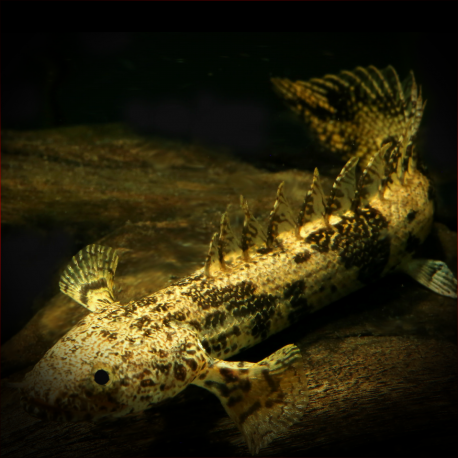More info
Datasheet
| Minimum Tank Size | 650 litres / 171.71 US gallons |
| Maximum Size | 72.0cm / 28.35inches |
| Temperature | 22°C / 71.60°F - 28°C / 82.40°F |
| Hardness | 5-25ºdH |
| pH | 6.0-8.0 |
General Description: An incredibly hardy species with very poor vision, the Nile Bichir, or Polypterus Bichir Bichir, relies on its sense of smell to locate food. Belonging to the Polypteriformes category, this species is one of the last surviving relatives of ancient species, dating back over 200 million years to the Triassic Period. With unique adaptations like a divided swim bladder for breathing and amphibian-like gills in its youth, the Bichir showcases links between fish and amphibians.
Aquarium Setup: For the Nile Bichir, floor space is more crucial than depth in the tank. Providing a soft substrate, driftwood, smooth rocks for hiding, and a tightly-fitting cover is essential. While plants are not mandatory, they are welcomed additions to the setup. Following the recommended water conditions of a pH range of 6.0-8.0, hardness between 5-25°dH, and a temperature of 22-28°C is crucial (see table).
Behaviour: Although relatively peaceful, the Nile Bichir should not be housed with tankmates that can fit in its mouth. Suitable companions include certain Polypterus species, Synodontis, Datnoides, Knife Fish, larger Ctenopoma species, medium to large characins, and African Butterfly Fish. They exhibit nocturnal hunting behavior and may drown if denied access to air, highlighting their unique behaviors and needs in a home aquarium setting.
Feeding and Diet: Carnivorous in nature, the Nile Bichir typically refrains from accepting dried foods in captivity and prefers live or frozen meaty treats like prawns, earthworms, mussels, and lancefish. While some specimens may adapt to pelleted foods, a diet rich in protein is essential for their health and vitality.
Reproduction & Dimorphism: Reproduction in captivity remains unrecorded, but the species is believed to breed similarly to other Polypterus. During the rainy season, changes in water conditions can trigger spawning behavior. The male exhibits a thicker anal fin compared to the female, and courtship involves chasing and nudging the female before fertilizing and scattering the eggs amidst vegetation. The offspring hatch within days and require meticulous care to ensure their survival.
Habitat and Distribution: Widely distributed across regions like Egypt, Kenya, Nigeria, Cameroon, and GuineaBissau, the Nile Bichir thrives in shallow waters of lakes, rivers, and marshes. Its natural habitat encompasses various African countries, showcasing its adaptability to diverse aquatic environments.

